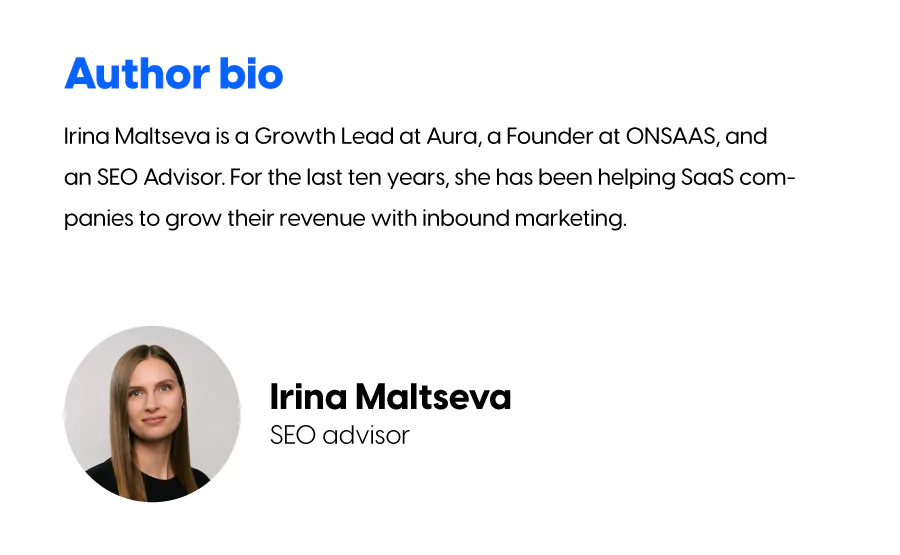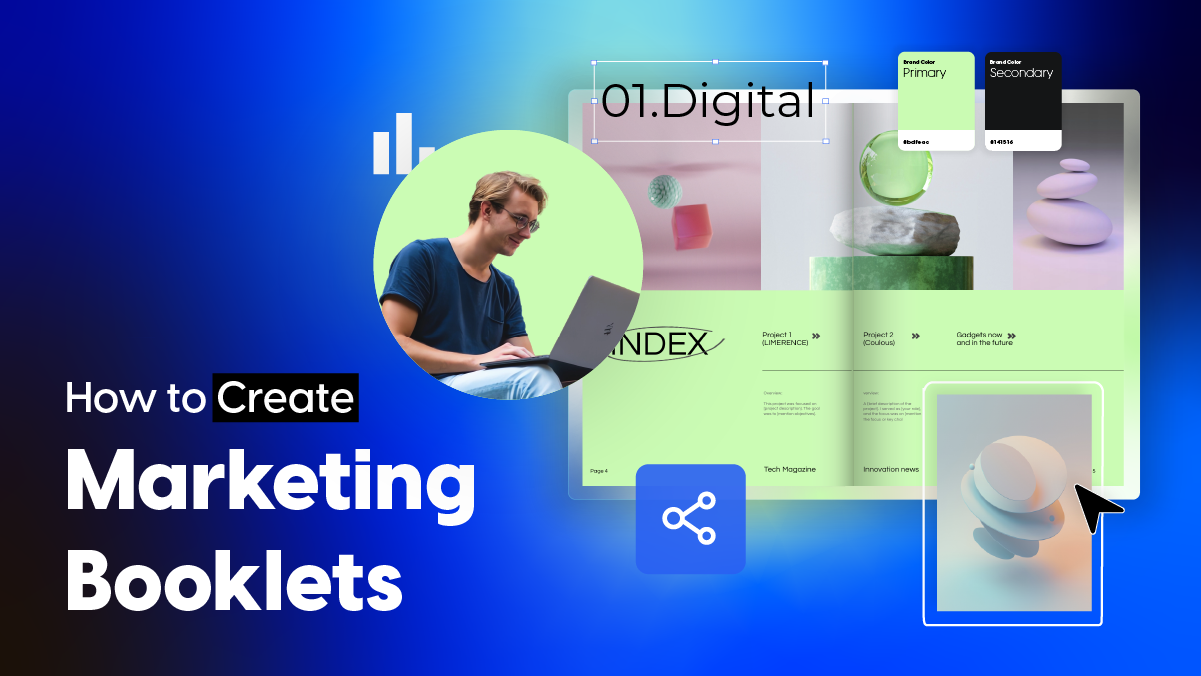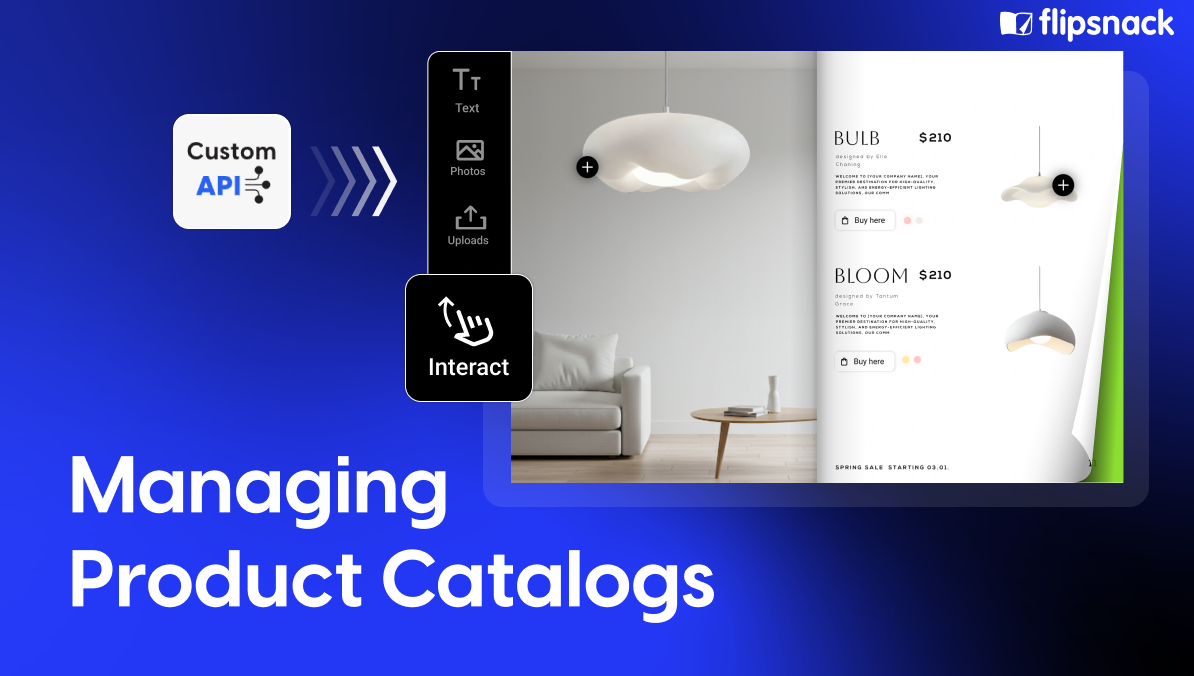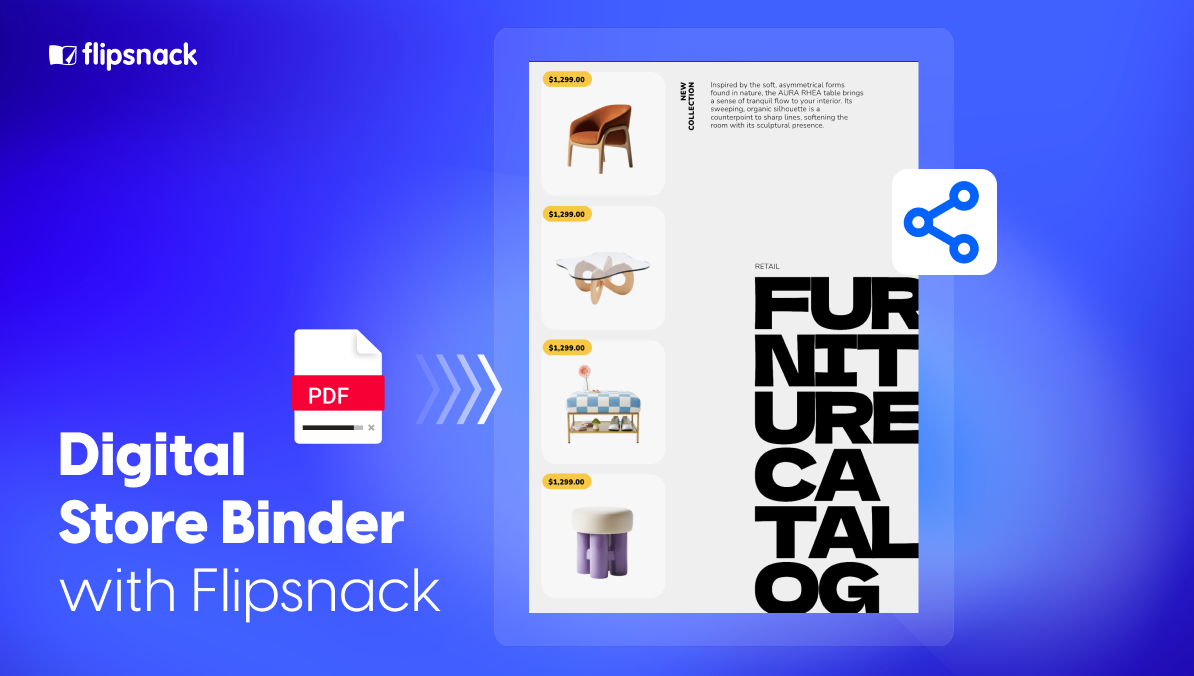How to Create Marketing and Advertising Booklets
Published on: July 21st, 2025
Last updated on: December 18, 2025
Effectively interacting with an audience is the core objective of any marketing effort. Marketing booklets and advertising booklets help businesses achieve this in a visually engaging, structured format that enhances brand communication and delivers clarity.
Whether you’re creating a promotional booklet for a product launch or a booklet ad for a seasonal campaign, these versatile assets present your audience with clear, engaging information. Booklet marketing works especially well when paired with interactive features like embedded videos, clickable calls to action, and forms that boost engagement and drive conversions.
Often, professional designers must work on the asset as well, making the workflow convoluted and unnecessarily complex. Marketers need to convey product or service benefits in a concise and visually consistent way; while also managing branding, tracking engagement, and enabling collaboration between departments. Doing so reliably becomes incredibly complex without the right tools.
Here, you’ll discover how to use Flipsnack to create marketing booklets that convert. We’ll cover plenty of aspects, from defining your audience and message, right through to layout, distribution, collaboration, and performance tracking.

TOC
What is a marketing booklet and why use one?
A marketing booklet is a multi-page document. Its purpose is to promote your products, services, brand story, or value proposition. These can be digital or printed, although digital formats are far more practical and effective for today’s fast-moving marketing teams.
Unlike a flyer, which is limited in how much space is available, or a catalog, which tends to be overwhelming, a booklet offers the perfect balance of depth and focus. This enables the business to guide the reader toward a specific outcome via storytelling (ideally profitable action).
Booklets are especially useful in business-to-business (B2B) campaigns where buyers want credibility, proof, and clear benefits.
In particular, industries that lean heavily on marketing and advertising booklets include:
- Real Estate: Agents use them to showcase listings, property photos, client testimonials, and sales history.
- Fashion: Brands can showcase seasonal collections and design stories.
- SaaS: Companies can easily discuss product features, customer reviews, and other important information in an easy to follow package.
- Education: Universities and colleges can talk about their programs, campus life, and admissions requirements.
- Cybersecurity: Companies like Aura use digital booklets to educate consumers on identity protection, digital footprint checking, and to differentiate their brand in a competitive, trust-based industry.
Whichever industry your business is in, booklets offer a highly versatile asset in your marketing toolkit.
What to include in a marketing or advertising booklet
Successful marketing booklets follow a structured flow and stay focused on what matters to the reader. While your content will vary depending on your offer, most high-performing advertising booklets include these fundamental elements:
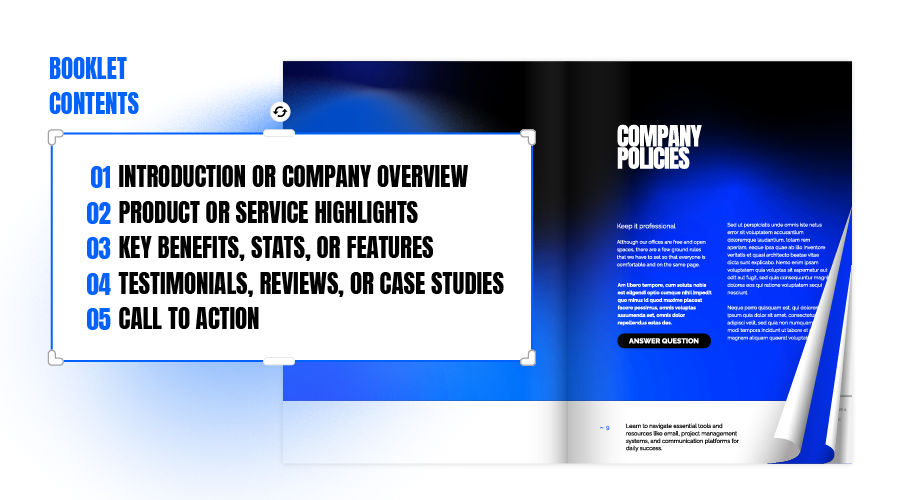
1. Cover page
Consisting of a high-quality image/illustration that reflects your brand. Include your logo and a clear title. Keep this opening page clean and inviting.
2. Introduction or company overview
In a few short lines, introduce your brand and establish why the booklet is worth their time. Clearly state who you help and how you help them.
3. Product or service highlights
Each key offering should have its own dedicated page or section. Use product images and screenshots to highlight your key offerings, and make sure you keep the copy focused on the exact audience pain point each offering addresses.
4. Key benefits, stats, or features
Bullet points are a great way to succinctly and clearly list pertinent statistics and features. Just make sure to prioritize clarity over quantity, and only include what supports the reader’s decision-making process.
5. Testimonials, reviews, or case studies
Use social proof to establish trust. Short testimonials are good, as are five-star reviews and well-known client logos and monogram design. If space allows, a brief case study that illustrates your solution in action can be very beneficial here.
6. Call to action
As with any promotional booklet, you must close with a clear call to action. Whether it is “Book a demo,” “Download our app,” or “Schedule a consultation,” it should be prominent and easy to follow.
How to create a marketing booklet or advertising booklet in Flipsnack
Flipsnack makes creating a digital marketing booklet simple with this step-by-step process.
Step 1: Define your goal and audience
To start, define the goal of the booklet—whether you’re creating a promotional piece, a product showcase, or a campaign-specific booklet ad. These questions help to guide this step:
- Do we want leads or build awareness?
- Do we want to educate or drive action?
- Do we want to support a product launch or a sales pitch?
Once you clarify these goals, next define the target reader. Know their exact job role and what that entails on a daily basis. The more granular you’re able to get with these details, the easier it’ll be to write content that resonates.
Step 2: Plan the content and structure
All booklets follow the same rough structure. This starts with a short introduction which leads into product or service details. Next should be supporting content such as benefits, case studies, and proof, finally closing with a call to action. This simple structure keeps your message clear and organized.
Step 3: Upload a PDF to Flipsnack, choose a template, or start from scratch
Flipsnack enables you to start with a template or from scratch. If you want full control, starting from a blank canvas using the drag-and-drop editor is a great way to achieve the structure and appearance you want.
Flipsnack allows you to upload your brand assets, use your color palette, and apply your fonts across evey marketing booklet page.
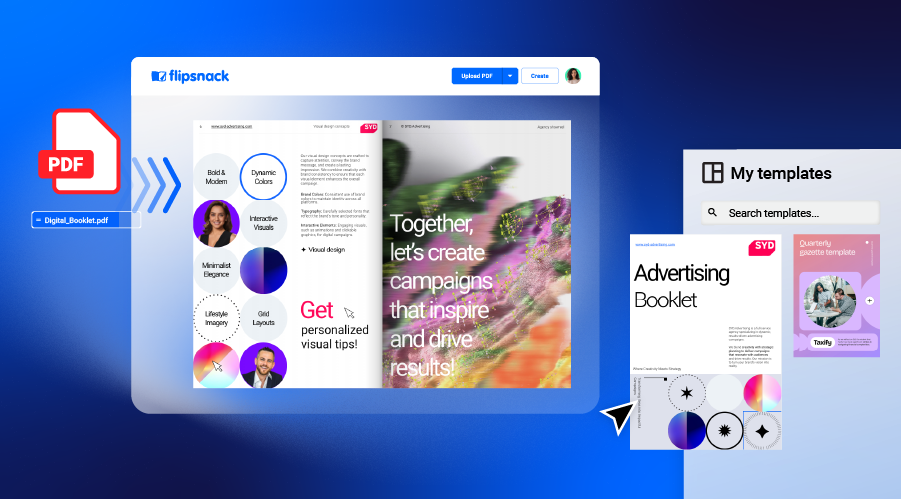
Step 4: Use engaging visuals and short copy
Every page of your booklet should visually engage the reader. It should also be very clear and easy to understand. Achieve this with high resolution images and branded graphics, coupled with punchy benefit-driven copy. Each line should move the reader forward.
Break up your content using sections, subheadings, and bullets. Keep paragraphs brief and tone conversational.
Step 5: Add interactive elements
Flipsnack allows you to add digital enhancements that make your booklet more engaging with video embeds, buttons, forms and even pop-ups.
These features keep users engaged longer, thus encouraging conversion. What’s more, they also provide insight into what your audience cares about most.
Step 6: Review, publish, and track engagement
Once you’re happy with the layout, preview the booklet on desktop and mobile. Double-check all your links to make sure they go to the right destination. Look for consistent line spacing and ensure branding is consistent throughout.
Next, publish your booklet. Once you’ve done so, monitor performance with Flipsnack’s analytics, which will show pages with the most views, clicks, and view duration. This data is crucial to refine future booklets and marketing strategies.

Best practices for effective marketing and advertising booklets
With the following best practices, you can optimize for reader engagement and get the most profitable actions from your marketing and advertising booklet.
Keep copy minimal but impactful
Start with direct headlines that immediately address your reader’s top questions. Keep things brief by avoiding long paragraphs, and speak in terms of benefits, not features. Readers want tangibility.
Use social proof to build credibility
Social proof is absolutely key in a customer journey. Use customer testimonials, success metrics, and short case studies to build your authority and trustworthiness.
Optimize your booklet for promotional campaigns
When creating a promotion booklet, focus on campaign-specific goals. A successful booklet ad balances visual appeal with clear messaging. Structure your advertising booklet to guide readers from awareness to action, using strategic placement of CTAs and compelling copy that speaks directly to campaign objectives.
Distribute it across all your channels
Distribute your booklet wherever you can – newsletters, social media, LinkedIn. You can also link it in blog articles or share it in direct messages.
Embed it in high-traffic website areas
Use your homepage to drive traffic to your booklet. Make it visible wherever your audience already visits. You can also create a dedicated download page or a landing page and optimize it for search.
Use it in sales and customer success conversations
Booklets are excellent tools for sales presentations, proposal follow-ups, and onboarding packages. Include a link in your outreach emails or share it during client meetings.
Protect sensitive content when needed
Marketing booklets and advertising booklets usually include sensitive information. This can include:
- Customer data
- Internal processes
- Strategic insights
- Pricing information
This information can be a prime target for fraudsters when your booklets are shared publicly. It can be intercepted, copied, and forwarded without you knowing. This can lead to unauthorized access, identity theft, or reputational damage.
If your booklet includes sensitive content, use Flipsnack’s privacy settings:
- Restrict downloads
- Add password protection
- Limit viewers by domain
Consider pairing these measures with broader protection like Aura that offers identity theft insurance and data security monitoring.
Collaborate with other teams during creation
Make sure to work with sales, customer support, and product teams while you’re creating the booklet. The insight they offer will help ensure that your messaging answers real questions and addresses actual objections.
Repurpose the content across formats
After publishing, reuse parts of your booklet where appropriate (blog posts, social media threads, and onboarding email sequences, etc.). Not only will you save time from creating new content all the time, but you’ll also expand your reach from different platforms. And the possibilities are endless. You can create a blog post from it or turn a key section into a LinkedIn or Instagram post, and even lead your readers to your booklet.
You can also host a live webinar or a podcast based on your booklet to have open discussions on the topic that features your team members, partners, or experts, and have a live interaction with your audience where they can ask questions directly.
Marketing booklets and advertising booklet examples and templates
If you need inspiration, Flipsnack offers a range of professionally designed templates for you to customize to suit your goals. Here are two excellent starting points.
1. Interactive Marketing Booklet Template
First, Flipsnack’s interactive marketing booklet template sets a clear and easy-to-follow format, including company overview, visual design concepts, budget allocation, and performance metrics. It includes engaging interactive components, particular videos, photo slideshows, captions, and links to create a complete and engaging marketing and advertising booklet.
In particular, it is ideal for product catalogs, digital magazines, and real estate listings.
2. Interactive Advertising Booklet Template
Alternatively, you can use this effective advertising booklet. With this customizable asset, any agency or marketing team can create ad copy, visual designs, media placements, and key performance metric displays. The fully customizable template gives users the potential to create streamlined interactive assets that immediately hook their audiences.
Both templates are editable and ready to use. You can adjust them quickly without starting from scratch.
Turn your PDFs into interactive advertising booklets today
A marketing booklet gives your brand a platform to speak clearly, confidently, and creatively.
With the right content and tools, you can turn passive readers into active prospects who are ready and WANTING to take profitable action. Whether you’re launching a new product, introducing your brand, or supporting your sales team, an interactive booklet gives your message lasting power.
Flipsnack makes it simple to go from idea to execution without the usual design bottlenecks. You get templates, analytics, collaboration tools, and full brand control in one platform.

FAQs on promotional booklets
An ad booklet is a small publication designed specifically for advertising purposes. It focuses on promoting offers, new products, or brand messages in a compact, easy-to-digest format. Ad booklets usually feature bold visuals, concise copy, and a direct call to action. They are often distributed digitally or in person to generate interest and drive immediate engagement.
An ad booklet is a compact, visual guide made to promote offers or products. It’s quick to read, eye-catching, and often shared in person or online to boost interest fast.
To create your own booklet, start by defining your audience and marketing goal. Then outline your content, organize it into a logical structure, and design each page using a consistent visual style. Platforms like Flipsnack allow you to build interactive booklets from templates or upload a PDF, add clickable links, videos, and lead forms, and then publish or share the booklet online.
Making a booklet look professional starts with a strong cover and intro. Next, add product highlights, key benefits, testimonials, or stats, and a clear call to action. Always make sure everything reflects your brand and points the reader to the next step.
First, know your audience and goal. Then plan the content, lay it out clearly, and design it with a consistent look. Tools like Flipsnack let you use templates, add links or videos, and publish it online with ease.
